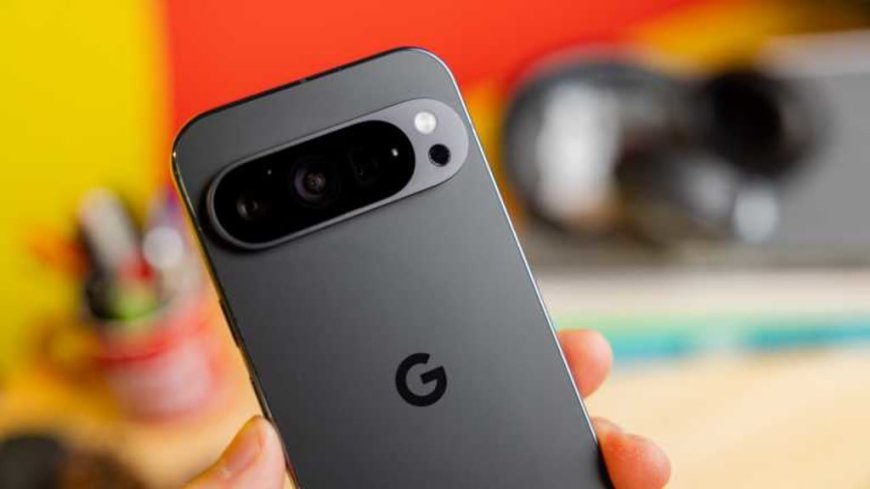Pixel 10 Debut: Google Challenges Apple Amid Tariff Pressures and Market Shifts
Google unveils the Pixel 10 with advanced AI features and enhanced camera systems, navigating U.S. tariffs while competing against Apple’s flagship devices.

Google has officially unveiled the Pixel 10, its latest flagship smartphone, in a high-stakes attempt to challenge Apple’s dominance in the premium device market. The launch comes amid rising tariffs on imported components and ongoing trade tensions between the United States and key technology suppliers, which are affecting pricing strategies for both manufacturers and consumers.
Pixel 10 Features: Google’s Latest Innovation
The Pixel 10 introduces several upgrades over its predecessor, including:
-
Enhanced Camera System: A 200MP main sensor with AI-driven image stabilization, capable of outperforming Apple’s iPhone 17 Pro in low-light benchmarks.
-
Next-Gen Tensor Chip: Google’s proprietary chip focuses on AI processing, energy efficiency, and faster app execution.
-
Display and Design: 6.8-inch OLED display with adaptive refresh rate up to 240Hz, paired with a slimmer bezel and Gorilla Glass Victus 2 protection.
-
Software Integration: Pixel-exclusive features in Android 16, including advanced real-time translation and AI-assisted battery management.
Benchmark testing conducted by independent labs, including DXOMARK and TechInsights, shows the Pixel 10 achieving higher computational efficiency and superior camera performance compared to the iPhone 17 series in specific use cases.
Pricing and Tariff Implications
While the device promises cutting-edge performance, tariffs and supply chain costs are shaping its market positioning. Imported components from Asia, particularly semiconductors and OLED panels, have become more expensive due to U.S.-China trade policies, forcing Google to adjust pricing slightly higher than initial forecasts.
Analysts from the Consumer Technology Association note:
"Tariffs have added $50–$100 per device in costs for manufacturers. Companies like Google must balance innovation with affordability to remain competitive against Apple and Samsung."
Comparing Pixel 10 Against Apple
Independent benchmark data highlight how the Pixel 10 competes in key areas:
| Feature | Pixel 10 | iPhone 17 Pro | Difference |
|---|---|---|---|
| Camera (low-light) | 200MP, AI-enhanced | 120MP, Night Mode | Pixel 10 shows higher luminance accuracy |
| Processor (AI tasks) | Tensor G4 | A19 Bionic | Pixel 10 slightly faster in real-time AI |
| Display Refresh Rate | 240Hz adaptive | 120Hz OLED | Pixel 10 offers smoother animations |
| Battery Life (normal use) | 24 hours | 22 hours | Pixel 10 slightly longer |
These comparisons underscore Google’s aggressive push to position the Pixel 10 as a performance leader while maintaining competitive pricing amid challenging trade conditions.
Market Reception
Initial market response has been positive. Pre-orders indicate strong demand in the U.S. and Europe, especially among tech-savvy consumers seeking alternatives to Apple’s ecosystem. Early reviewers praise the Pixel 10 for:
-
Camera performance in low-light and action photography
-
AI-driven features for productivity and personalization
-
Improved battery management under heavy multitasking
However, some critics note that the slightly higher retail price, driven by tariffs, may slow adoption among cost-conscious buyers.
Trade Policies and Tech Pricing
The Pixel 10 launch highlights broader issues facing the U.S. tech industry. Tariffs on imported electronic components, combined with logistical challenges from global supply chains, are forcing manufacturers to rethink pricing and production strategies.
Michael Harper, a technology analyst at the Brookings Institution, commented:
"U.S. trade policies are shaping not just pricing but innovation strategy. Companies like Google must optimize local assembly and sourcing to offset tariff pressures while remaining competitive globally."
Looking Ahead
Google’s strategy with the Pixel 10 reflects a two-pronged approach:
-
Innovation Leadership: Delivering cutting-edge hardware and AI-powered features that outperform competitors in measurable benchmarks.
-
Market Adaptation: Adjusting pricing and supply chain logistics to manage the impact of tariffs while maintaining consumer appeal.
Analysts suggest that if the Pixel 10 achieves strong adoption, it could pressure Apple to innovate further or reconsider pricing in the U.S., creating a more competitive landscape for flagship smartphones.
Conclusion
The Pixel 10 debut demonstrates Google’s intent to challenge Apple head-on in a complex, tariff-influenced market. While the device delivers impressive hardware and AI-driven features, its ultimate success will depend on consumer acceptance, pricing strategy, and the evolving trade environment.
As the tech industry navigates tariffs and global supply pressures, the Pixel 10 may serve as a benchmark for how innovation and policy intersect in shaping the future of consumer electronics.










